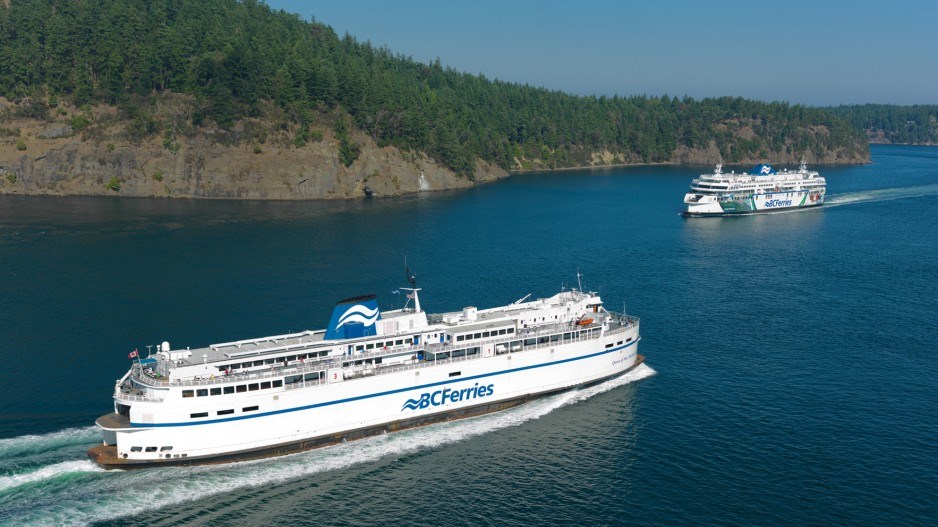Only the Royal Canadian Navy spends more on ship repair services in Canada than BC Ferries.
The corporation expects to spend $57 million with local shipyards and marine service suppliers to refit its fleet this season. Add in work around terminals and informational technology systems, and that figure reaches nearly $100 million.
“Over the last decade, that’s about a billion dollars that we’ve spent inside the economy of British Columbia taking care of our fleet,” said Mark Collins, president and CEO of British Columbia Ferry Services Inc. (BC Ferries).
In the off-season, BC Ferries contracts local suppliers to upgrade and repair its 36-vessel fleet, including Seaspan Shipyards and Allied Shipbuilders, among others. Around 35% of its annual refit spend is handled by its own 150-person fleet maintenance unit in Richmond.
In peak season, it is full steam ahead for the 58-year-old corporation.
“It’s been exceptionally busy. We’re probably coming off our biggest summer ever. I think we set a new record for vehicle traffic for sure,” said Collins, adding that the organization is still waiting to crunch the numbers on foot traffic. They will be close to a record high if they don’t surpass it.
“The economy is booming, communities are active and buzzing. We’re seeing growth in population,” he said. “And of course business is growing, commercial traffic is growing to keep pace with that.”
Last year, ferry foot traffic reached 22 million, and the system carried 8.7 million vehicles – the highest passenger levels experienced by BC Ferries in 20 years.
To meet higher demand and to replace ageing ships, the corporation this year embarked on its biggest capital plan in history: a $3.9-billion investment over 12 years.
“The ferry system is the same size today that it was in 1994. There’s been no major capacity added to the ferry system since the Spirit Class ferries were built in the early 90s. And we’ve just come up against the physical limits of that capacity,” said Collins.
The organization’s capital plan, which was proposed to the BC Ferry Commissioner earlier this year, will add a major vessel to BC Ferries’ fleet, and will double up service to certain islands. By the end of the decade, the fleet could reach 40 vessels.
“Some would say BC Ferries are late to the game, but we have to remember that this is very expensive infrastructure.”
After vessels, fuel costs are the organization’s second largest expense, and BC Ferries has spent $1.4 billion in fuel procurement since 2003.
“We have seen a decoupling between the price of diesel fuel, and the world oil price. Here in the Pacific Northwest we still have some of the highest diesel fuel prices in North America,” Collins said. “It continues to be a worry.”
Approximately $1 billion of BC Ferries’ capital plan will be spent on clean and quiet technology. It already has four – soon to be five – ships that run on liquefied natural gas (LNG).
“It’s a good interim step to the electric future. And you’ll see more LNG in our fleet.”
BC Ferries uses batteries manufactured in Richmond to power hybrid ships that operate like a Toyota Prius on the water by using an engine-battery combination to generate power.
Collins says the organization is in discussions with BC Hydro about the long-term future of electrifying BC Ferries’ fleet. A rough calculation shows it will be a major undertaking.
“We would need Site C devoted to us for about five hours a day to charge our entire fleet,” said Collins.
“It’s a huge amount of electricity, and of course we don’t have a Site C, and we don’t have the power lines to carry it to our fleet. The electricity is not on the waterfront in that scale,” he said. “Some day it may be.”




